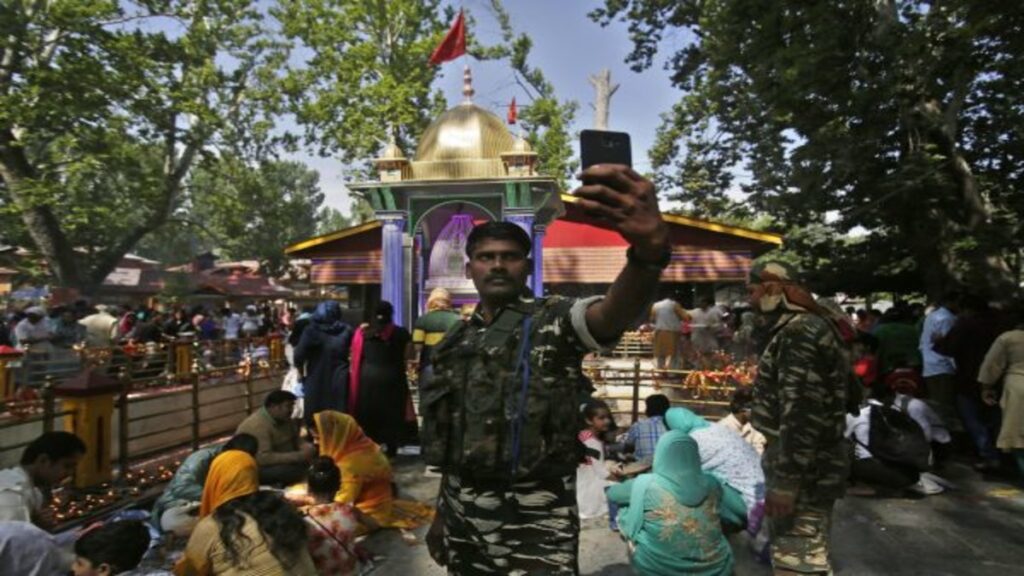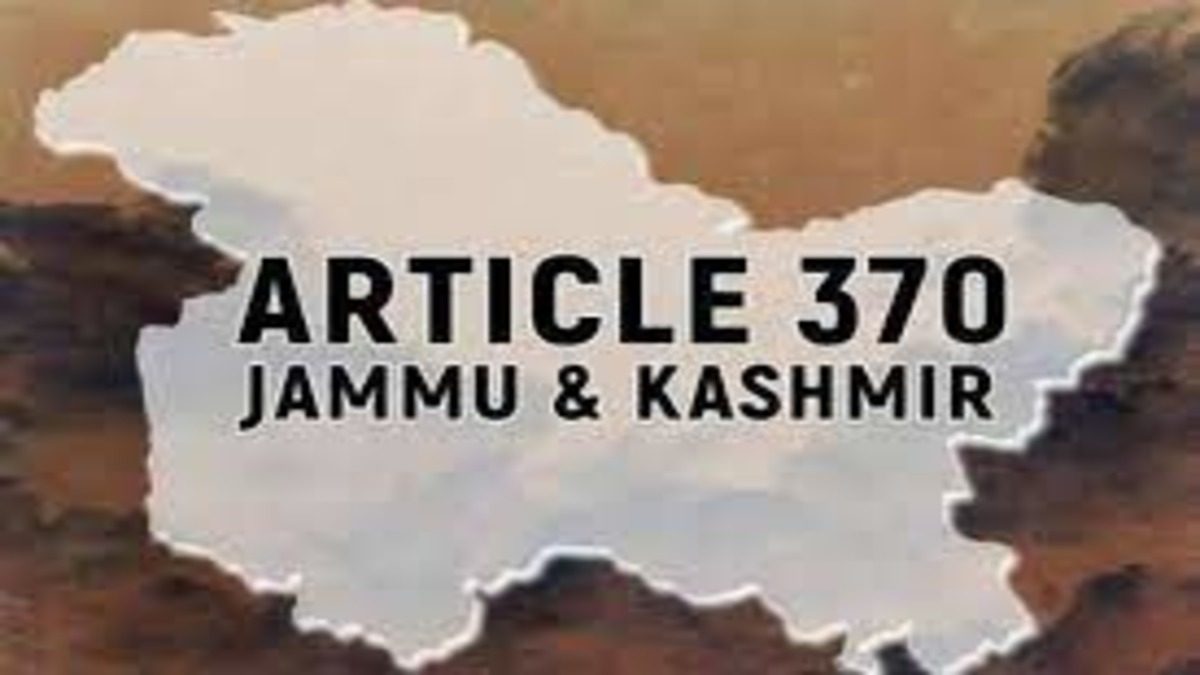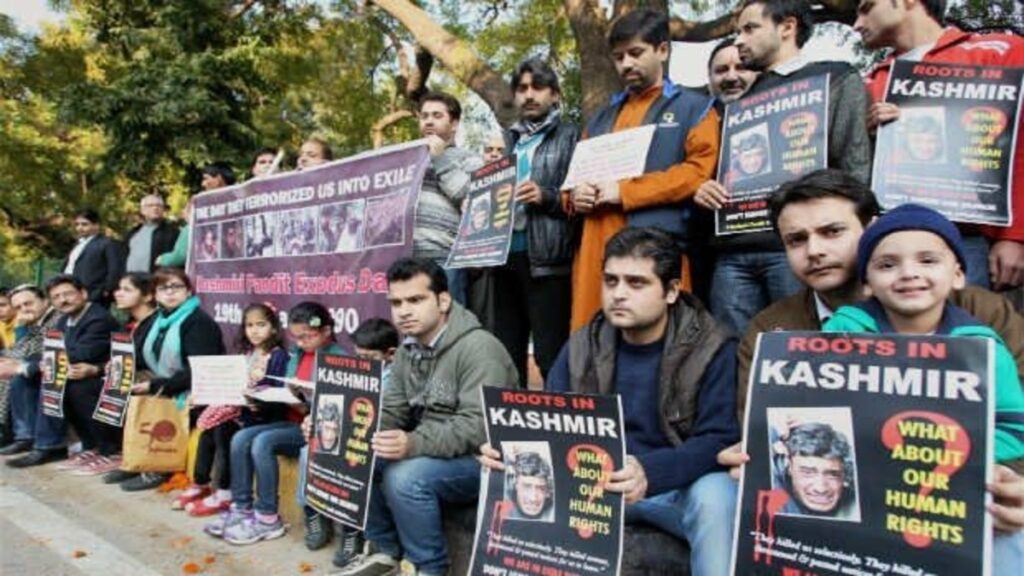Has the abrogation of Article 370 had any impact on a displaced Kashmiri Hindu family?
#KashmirRehabilitation #Article370Impact #KashmiriPanditsReturn #JammuKashmirDevelopment #PostAbrogationRealities
In August 2019, a historic move reverberated through the valleys of Jammu and Kashmir as Article 370 was abrogated, signaling a significant shift in the region’s political landscape. One of the communities deeply affected by the long-standing conflict in the region is the Kashmiri Pandits. Let’s delve into the present status of these migrants post the Article 370 abrogation and explore whether it has ushered in positive changes for them.
The Exodus and Its Shadows: To understand the current scenario, we must first revisit the past. The exodus of Kashmiri Pandits from the region in the late 1980s due to rising insurgency and violence is a painful chapter etched in the community’s history. For decades, these displaced individuals longed for a resolution that could pave the way for their return and rehabilitation.
Post-Abrogation Developments: The abrogation of Article 370 was met with a mix of anticipation and skepticism, especially among the displaced Kashmiri Pandits. The central government aimed to integrate the region more closely with the rest of India, fostering development and addressing long-standing issues. But how has this translated for the Kashmiri Pandits?
Return and Rehabilitation Efforts: Efforts to facilitate the return and rehabilitation of Kashmiri Pandits gained momentum post the Article 370 abrogation. Schemes and packages were announced to provide financial assistance and housing options for those willing to return to their homeland. However, the ground reality paints a complex picture.
Challenges on the Path to Return: While initiatives have been launched, the road back home for Kashmiri Pandits is not without obstacles. Security concerns, infrastructure limitations, and the need for emotional healing pose significant challenges. It’s crucial to assess whether these challenges are being effectively addressed.
Elaboration: Real Stories, Real Impact
In the quest to comprehend the tangible outcomes of post-Abrogation initiatives for the Kashmiri Pandits, the most compelling and authentic sources are the narratives directly from the community members. Personal stories and interviews provide a nuanced understanding of the ground-level changes and challenges encountered by those who have contemplated or initiated the journey back to their homeland.

Personal Narratives: The power of personal narratives lies in their ability to humanize the statistics, making the experiences of individuals tangible and relatable. For instance, consider the story of Priya, a Kashmiri Pandit who decided to return to the Valley after years in exile. Priya’s narrative can illustrate the emotional and practical dimensions of the return: the joy of revisiting her ancestral home, the challenges of adapting to a changed environment, and the optimism for a renewed connection with her cultural roots.
Interviews: Conducting interviews with Kashmiri Pandits who have experienced the impact firsthand allows for a more in-depth exploration of their thoughts, feelings, and the practical aspects of their return. These interviews can reveal the multifaceted nature of the rehabilitation process. For example, interviewing a family that successfully reintegrated into their native community can provide insights into the social dynamics, community reception, and support systems that played a crucial role in their resettlement.
Challenges Faced: The interviews and narratives should not shy away from discussing challenges. These could range from security concerns and infrastructure deficiencies to emotional hurdles and cultural adjustments. Exploring the nuanced difficulties faced by individuals or families during the process of return adds depth to the analysis. An account of a family struggling with inadequate housing or a professional finding it challenging to restart their career in the changed socio-economic landscape can exemplify the intricacies involved.
Success Stories: On the flip side, success stories need to be highlighted as well. These narratives can inspire hope and showcase instances where the initiatives have led to positive transformations. A story of a Kashmiri Pandit who not only successfully returned but also actively contributed to the local community through entrepreneurial ventures or cultural initiatives exemplifies the potential positive impact of the post-Abrogation measures.
Diverse Perspectives: It’s crucial to ensure a diversity of perspectives in these narratives. Different age groups, professions, and socio-economic backgrounds should be represented to capture a comprehensive view of the community’s experiences. The story of a young professional returning to restart their career might differ significantly from that of an elderly individual seeking solace in revisiting their roots.
In conclusion, the real impact of post-Abrogation initiatives on Kashmiri Pandits can be authentically gauged through the stories and interviews of those directly affected. These personal narratives not only bring to light the challenges faced but also reveal the resilience, optimism, and transformative potential of the ongoing rehabilitation efforts in Jammu and Kashmir.
Voices from the Ground: Unveiling the Tapestry of Kashmiri Pandits’ Experiences
In order to truly comprehend the impact of post-Abrogation initiatives on Kashmiri Pandits, it is imperative to turn our attention to the poignant voices emerging from the community itself. Interviews and quotes from those who have experienced the ground realities firsthand provide a nuanced perspective, offering insights into both the positive strides and persistent challenges faced by the displaced community.
Positive Narratives:
Example 1: A Glimpse of Hope Amidst Ruins In a candid interview, Raghav, a Kashmiri Pandit who recently returned, expressed a newfound sense of hope. He described witnessing infrastructural improvements in his native village, a testament to the government’s commitment to rebuilding the region. “The roads are better, there’s electricity round the clock, and schools have reopened. It feels like the first rays of dawn after a prolonged night,” Raghav shared, encapsulating the optimism that some returnees are experiencing.
Example 2: A Resilient Community Spirit Many Kashmiri Pandits highlight the resilient spirit of their community, which has remained unbroken despite decades of displacement. An interview with Shalini, a second-generation migrant, revealed how cultural initiatives and community events organized in the resettlement areas are fostering a sense of belonging. “We’ve created a mini-Kashmir here. Our festivals, our rituals – they are not lost. It’s heartening to see the younger generation staying connected with our roots,” Shalini remarked, emphasizing the cultural revival taking place.
Challenges and Concerns:
Example 1: Lingering Security Apprehensions While some have returned with optimism, others express deep-seated concerns, particularly regarding security. Interviews with individuals like Vikram underscore the challenges posed by the prevailing security situation. “There’s an underlying fear that lingers. Despite the promises, we often question if it’s safe to return permanently,” Vikram shared, shedding light on the complex interplay between emotional attachment and the harsh realities of security risks.
Example 2: Infrastructural Gaps and Unmet Expectations On the flip side, accounts from returnees reveal that while progress is palpable, it’s not uniform across the board. Seema, who returned with dreams of rebuilding her ancestral home, expressed disappointment at the slow pace of infrastructural development. “The promises were grand, but the ground reality is different. Basic amenities are lacking, and we expected more substantial progress by now,” Seema lamented, highlighting the need for a more comprehensive and accelerated development plan.
Navigating the Spectrum:
These diverse narratives underscore the complexity of the Kashmiri Pandits’ experience post-Abrogation. While some are finding solace in the positive changes, others grapple with persistent challenges. It is crucial to recognize that the community’s journey towards normalcy is multi-faceted, shaped by individual experiences, aspirations, and the broader socio-political landscape. As we continue to analyze the impact of post-Abrogation measures, these authentic voices from the ground provide invaluable insights into the ongoing narrative of Kashmiri Pandits’ resilience, hopes, and struggles.
Measuring Success: Unraveling the Impact of Post-Abrogation Initiatives for Kashmiri Pandits
The success of any post-abrogation initiative for Kashmiri Pandits must be evaluated through a multifaceted lens, considering a range of metrics that extend beyond mere numerical figures. One critical parameter is the number of returnees. While a surge in the number of Kashmiri Pandits choosing to return to their homeland is a positive sign, the quality of their resettlement experience is equally crucial.
To delve into specifics, let’s examine the case of the Sheikhpura village in Pulwama district. This village has witnessed a notable influx of returning Kashmiri Pandit families. By analyzing their stories, we can gauge the success of the initiatives on a human level. Are these families experiencing a seamless reintegration into their communities, or are they encountering hurdles that impede their journey back to normalcy?
Infrastructure development serves as another vital yardstick for success. Improved infrastructure not only enhances overall living standards but also contributes to the sense of security and stability. For instance, the construction of new homes and the refurbishment of existing ones in areas like Mattan showcase tangible efforts to create a conducive environment for the returning community. By evaluating the scale and impact of such infrastructure projects, we can ascertain the effectiveness of the initiatives in rebuilding the foundations of Kashmiri Pandit life.
Socio-economic indicators are paramount in measuring the long-term viability of the rehabilitation efforts. Has there been an uptick in employment opportunities for the returning population? Are there initiatives fostering economic self-sufficiency, such as skill development programs or entrepreneurship support? Examining the economic landscape in areas with a significant Kashmiri Pandit presence, like Jagti Township, can provide insights into the success of initiatives aimed at catalyzing economic prosperity.
Furthermore, the mental and emotional well-being of the returnees is a nuanced but critical aspect. Success should not be solely measured in physical terms but should extend to the psychological and emotional realms. Support systems, counseling services, and community engagement programs play a pivotal role in ensuring the holistic well-being of Kashmiri Pandits returning after years of displacement. An analysis of mental health statistics and the prevalence of community support networks can shed light on the effectiveness of initiatives in addressing these often overlooked dimensions.
In essence, measuring success requires a comprehensive approach that goes beyond quantitative metrics. By examining the qualitative aspects of the return and rehabilitation process, we can paint a more nuanced picture of the initiatives’ impact. The success of post-Abrogation endeavors for Kashmiri Pandits lies not only in the numbers but in the real, tangible improvements in their lives, fostering a sense of belonging, security, and overall well-being.
Wrap-up:
In wrapping up our exploration of the post-Abrogation landscape, it’s essential to confront the unvarnished truth. The reality for Kashmiri Pandits post Article 370 abrogation is a nuanced tapestry of progress and persistent challenges.
Undeniably, there has been some headway in acknowledging and attempting to address the concerns of the displaced Kashmiri Pandit community. Initiatives and schemes have been set in motion, signaling an intent to facilitate their return and rehabilitation. However, the ground-level impact remains far from the envisioned ideal.
Challenges, stark and unyielding, cast a shadow over the narrative of progress. Security concerns, unresolved geopolitical tensions, and bureaucratic inefficiencies have, at times, overshadowed the purported rehabilitation efforts. The promises of financial aid and housing options seem tangled in bureaucratic red tape, leaving many in a state of limbo.
The return of Kashmiri Pandits is not just a logistical puzzle; it’s an intricate weave of emotions and scars from the past. The wounds of displacement run deep, and addressing them requires more than just policy measures. Emotional healing, cultural reintegration, and a genuine understanding of the community’s trauma demand a level of commitment that has yet to be fully realized.
Moreover, the international support touted as a potential game-changer is ensnared in the complexities of global politics. While diplomatic discussions have taken place, tangible outcomes that significantly alleviate the struggles of Kashmiri Pandits are elusive. The world watches, but actions on the ground paint a less optimistic picture than the diplomatic dialogues might suggest.
The road to complete rehabilitation is not a straight path but a winding, uphill journey. It demands not just continuous efforts but a profound reassessment of the strategies employed. A true reckoning with the challenges, a more transparent approach to policy implementation, and a genuine commitment to the welfare of the Kashmiri Pandit community are prerequisites for any meaningful progress.
In conclusion, while acknowledging the incremental steps taken, it would be remiss not to underscore the yawning gap between aspirations and actualities. The journey toward rehabilitation is, indeed, ongoing, but it is crucial to recognize that the current pace and approach may fall short of ensuring a truly successful return and reintegration for the Kashmiri Pandits. Honest reflection, proactive adjustments, and a collective will to bridge the existing gaps are imperative for turning the rhetoric of progress into a tangible reality.

